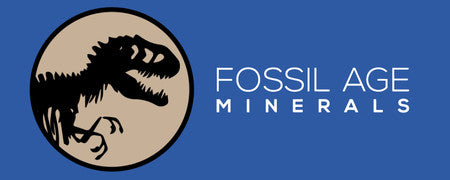0.5" Paronychodon Lacustris Theropod Raptor Fossil Tooth Hell Creek FM SD Display
Location: Hell Creek Formation, South Dakota (Private Land Origin)
Weight: 0.3 Ounces
Dimensions: 1.3 Inches Long, 1.3 Inches Wide, 0.7 Inches Thick (Display)
Dimensions Tooth: 0.5 Inches Long, 0.2 Inches Wide, 0.1 Inches Thick
Comes with a Display Box.
Paronychodon (meaning "beside claw tooth") was a theropod dinosaur genus. It lived during the Late Cretaceous in what is now Montana. This genus is a tooth taxon.
The type species, discovered by Edward Drinker Cope in 1876, is Paronychodon lacustris. It is considered dubious because of the fragmentary nature of the fossils.
A second species, Paronychodon caperatus, is known from the Hell Creek Formation of North Dakota and South Dakota and Lance Formation of Wyoming (latest Maastrichtian stage, 66 million years ago) and was originally referred to the mammal genus Tripriodon by Othniel Charles Marsh in 1889, but placed in Paronychodon by George Olshevsky in 1991. It is based on holotype YPM 10624, a tooth close in form to the holotype of P. lacustris but somewhat larger. In 1995 Olshevsky renamed Laelaps explanatus Cope 1876 into a Paronychodon explanatus; today the taxon is seen as based on Saurornitholestes teeth.
A very large number of other specimens matching these teeth in some or all aspects of their anatomy have been referred to Paranychodon. Some of these included serrated teeth, low teeth and teeth without a flattened side. These teeth of the general "Paronychodon" type have been reported from a wide variety of times and places, including the Early Cretaceous Una Formation of Spain, dating to the late Barremian age 125 million years ago.
Paronychodon has been conssidered a coelurid, an ornithomimosaur, a dromaeosaurid, an archaeopterygid, and a troodontid, though it could also be another kind of coelurosaurian theropod. While most researchers have therefore considered it simply respresents indeterminate theropod teeth, a small consensus has found them to be Deinonychosauria. The teeth assigned to Paronychodon are all small, and may have come from various juvenile deinonychosaurs. Jaws from adult individuals bearing identical teeth have never been found. Marsh already suggested such teeth were pathological, having formed when the first teeth of the lower jaws by accident grew back-to-back to each other on the mandible suture. Philip J. Currie in 1990 also concluded to a malformation, thinking the flattened side resulted from the tooth remaining attached too long to the inner wall of the tooth-socket. Serrated specimens of the type would thus simply be deviant dromaeosaurid teeth; however, unserrated teeth might represent a separate taxon or taxa.[6] One study, by Sunny Hwang, showed that the tooth enamel is identical to that found in Byronosaurus, a troodontid known from juveniles with serration-less teeth.

















